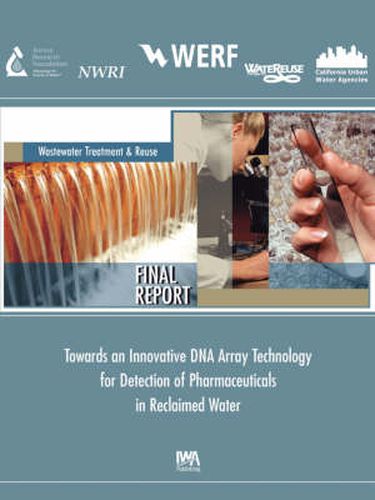Readings Newsletter
Become a Readings Member to make your shopping experience even easier.
Sign in or sign up for free!
You’re not far away from qualifying for FREE standard shipping within Australia
You’ve qualified for FREE standard shipping within Australia
The cart is loading…






Numerous pharmaceutical substances and their metabolites have been identified in the aquatic environment. Due to their unique environmental fate and lack of appropriate biomonitoring techniques, the potential risk of these compounds to public and environmental health has largely been undetermined. Recent interest in quantifying pharmaceuticals in waste effluents and aquatic environments has identified the need to develop bioanalytical assays that will accurately reflect presence of these compounds.
The goal of this research was to investigate the use of DNA microarrays as a bioanalytical tool for analysis of pharmaceutical contamination in re-use waters. Results from this study suggest that prototypic pharmaceutical contaminants target molecular events associated with pharmaceutical-induced gene induction and repression in exposed organisms. Gene expression profiles are subsequently evaluated as a means to discern pharmaceutical exposure. When fully developed, this bioanalytical approach will provide an efficient and robust method for screening pharmaceutical contaminants in reuse and other water matrices.
$9.00 standard shipping within Australia
FREE standard shipping within Australia for orders over $100.00
Express & International shipping calculated at checkout
Numerous pharmaceutical substances and their metabolites have been identified in the aquatic environment. Due to their unique environmental fate and lack of appropriate biomonitoring techniques, the potential risk of these compounds to public and environmental health has largely been undetermined. Recent interest in quantifying pharmaceuticals in waste effluents and aquatic environments has identified the need to develop bioanalytical assays that will accurately reflect presence of these compounds.
The goal of this research was to investigate the use of DNA microarrays as a bioanalytical tool for analysis of pharmaceutical contamination in re-use waters. Results from this study suggest that prototypic pharmaceutical contaminants target molecular events associated with pharmaceutical-induced gene induction and repression in exposed organisms. Gene expression profiles are subsequently evaluated as a means to discern pharmaceutical exposure. When fully developed, this bioanalytical approach will provide an efficient and robust method for screening pharmaceutical contaminants in reuse and other water matrices.